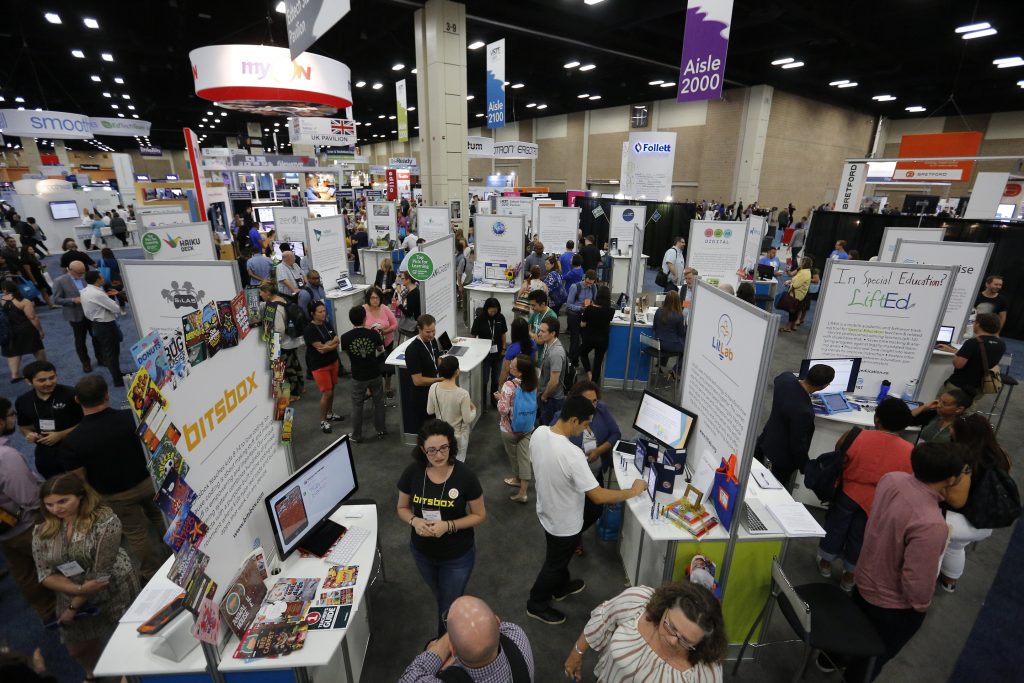
Articles
With New ISTE Technology K-12 Learning Standards, Washington Walks a Line
By Henry Kronk
May 21, 2018
Last week, the state of Washington officially updated their technology learning standards. K-12 students will now be expected to further incorporate technology into their existing skillset and learn as a ‘Digital Citizen,’ among other things. The standards were initially developed by the International Society for Technology in Education (ISTE).
They expand previous commitments to integrating technology in education, which were made official in 2008. According to the state document, “The Washington State K–12 Learning Standards are the required elements of instruction and are worded broadly enough to allow for local decision-making. Depending on school resources and community norms, instructional activities may vary.”
The previous 2008 standards stipulated that students should display ‘Technological Literacy’ along with ‘Technological Fluency.’ Borrowing directly from the ISTE standards, the new measures expand these requirements to ensure that learners become a/an:
-
Empowered learner,
-
Digital citizen,
-
Knowledge constructor,
-
Innovative designer,
-
Computational thinker,
-
Creative communicator, and
-
Global communicator.

“Our students must be innovators and problem solvers in every aspect of their learning,” said Steve Webb, superintendent of Vancouver Public Schools in a statement. “These new technology standards are critically important for preparing future-ready graduates.”
The new standards are no doubt an important step forward in the process of on-boarding young learners into a world of technology. But, as one might guess, many of these broadly worded affirmations run the risk of being too dilute.
Getting into the nitty gritty, they become somewhat less vague than the list above. True, Appendix F contains a summary of specific skills to teach, and when. But the vast majority of the standards might have been written by a thought leader.
For example, 6-8 grade students will be expected to “use a variety of devices (e.g., mobile devices and computers) to support planning, implementing, and reflecting upon a defined task.”
Or, students will “Apply concepts of statistics and probability (including mean, median, mode, and variability) to analyze and characterize data, using digital tools when feasible.” In that sense, a calculator might apply to the same degree as advanced Excel formulae.
As a comparison, take the Common Core State Standards Initiative—a document that has received a fair amount of criticism itself. For writing skills in Grade 6-8, students should “Develop the topic with relevant, well-chosen facts, definitions, concrete details, quotations, or other information and examples.” They must “Establish and maintain a formal style and objective tone.”
One might consider the world of writing to be significantly less concrete than tech. And yet the Common Core often comes off as more specific.
What Is and Isn’t In the ISTE Learning Standards
In fact, a good deal of basic computer science and internet-specific language is nowhere to be found in the document, or gets only a few mentions.
Email – 7
Code – 4
Coding – 2
Programming – 3
Meme – 0
Search engine – 3
Word processor – 0
Byte – 0
Server – 2
Back End – 0
Front End – 0
Cybersecurity – 2
Virus – 6
Desktop – 0
Folder – 0
File – 8
Hotkey – 0
Shortcut – 2
True, the standards make good mention of ‘algorithm’ (18), and ‘media literacy’ (19). But buzzwords are far more pervasive:
Collaborate – 32
Share – 44
Communicate – 32
Technology – 303
Digital – 321
Digital tools – 80
Integrate – 19
Network – 19
Both a digital wrist watch and Ray Kurzweil’s new Semantic Search could be considered a ‘digital tool.’
Why This Matters
In the past few years, U.S. students have begun to perform worse in school. Testing from the Program for International Student Assessment (PISA) and the National Assessment of Educational Progress (NAEP) indicate that, for most of the history of these tests, American students were progressing. But around 2015, scores largely plateaued in some areas and dropped in others. As of 2015, U.S. learners ranked near the bottom of industrialized countries. Their peers from countries such as Vietnam and Russia outperformed them.
There is also federal legislation to take into account.
Since the implementation of No Child Left Behind, educators have been pushing back against a culture of ‘teaching to the test.’ The law essentially established a prescriptive and specific standard of teaching that created a less-than-ideal classroom culture.
But the pendulum is now swinging in the other direction. The bipartisan Every Student Succeeds Act was passed in 2015 and, after numerous delays by the current administration, will go into effect for this coming school year. It’s the first reduction in federal control over education since the ‘80s and largely leaves states in control of their education standards. It leaves education standards largely to the states.
Many have speculated as to why student scores have dropped, often exhibiting a some hypocrisy in the process. But when it comes to creating technology standards for education, it doesn’t seem like an ideal moment to implement a document that is worded too broadly.
Cover image: Washington Superintendent Chris Reykdal at a separate event in 2017. Comcast Washington State, Flickr.









No Comments